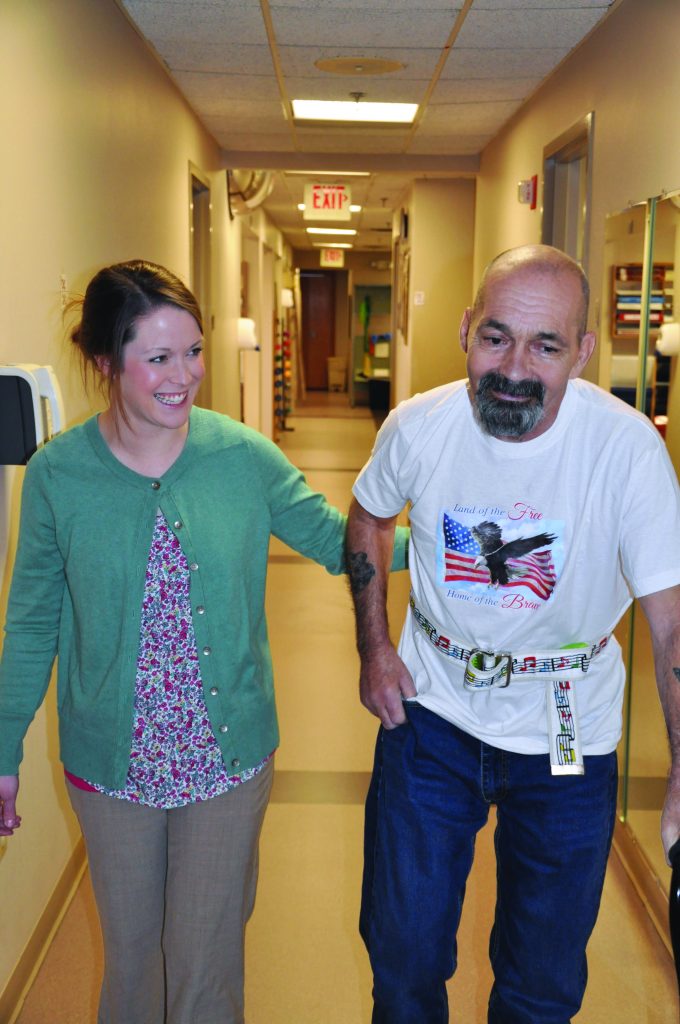
Determination of a SEAL
By Madison Loethen
Retired United States Navy SEAL Curtis “Curt” Barrett says he gained his perseverance and determination during his extensive military training, and it was those skills that helped him recover from a life-changing stroke.
Curt received part of his SEAL training in Alaska, which he said was ironic to him because he knew he was headed to Vietnam. While serving in Vietnam, Curt was injured by a hand grenade, which left remaining grenade fragments in his chest and knee. He recovered from that injury remarkably quickly and was back on duty in just two weeks.
“I got my ‘no-quit’ attitude from the SEALs. That has stuck with me throughout my life,” says Curt, who also returned to college at 50 years old to earn his bachelor’s degree in education.
Late last year, Curt suffered a severe stroke that left him hospitalized for a month.
“I couldn’t walk or talk, and the right side of my body was paralyzed. I was at Boone Hospital Center, and I started working with physical therapy and occupational therapy just after the stroke.” Curt completed inpatient therapy and rehabilitation, and upon discharge from the hospital, began outpatient therapy at Boone Therapy.
When Curt left the hospital, he was able to walk short distances with a walker, but still largely relied on a wheelchair for his mobility. He did not have control over his right arm or his right leg, and he struggled particularly with using his dominant right hand.
“I couldn’t pick up small objects or write anything,” says Curt.
With the help of physical therapy, Curt was able to discontinue using his wheelchair and began walking more frequently with a walker. Now, Curt is using a cane and sometimes even walks without any assistive device.
“I have a greater appreciation for toddlers just learning how to walk, after going through this,” Curt jokes.
Curt’s occupational therapist, Elsa Oestreich, has helped him regain the use of his right hand and arm. His right hand, elbow and shoulder exhibits high muscle tone, or hypertonicity, a common impairment after a stroke. Elsa stretches his right arm to decrease tone prior to working on functional activities.
“We first worked on being able to reach for objects, and then progressed to grasping and releasing objects,” says Elsa. “When he started to master those skills, we transitioned to increasingly precise movements like tying shoes and writing with various utensils.”
After several sessions, Curt mentioned that he still was not able to sign his name on documents. Elsa gave Curt the homework of simply tracing a straight line with a highlighter. Curt found he was able to do that with accuracy, so he decided to surprise her by also writing down her name and bringing it into the next therapy session.
“She was really happy to see that I wrote a whole word, but then she made it harder for me and we started working on sentences,” says Curt. Elsa was so impressed that she still has the worksheet hanging at her desk as a reminder of Curt’s constant dedication.
Elsa says that Curt’s willpower and eagerness to improve has aided his progress in therapy.
“He’s always ready to work, here and at home,” says Elsa. Outpatient therapy encourages patients to complete home exercise programs in addition to in-house therapy sessions, and Curt went the extra mile in both areas.
Curt will soon graduate from physical therapy and occupational therapy, as he has met most of his goals for recovery. Curt says he is extremely grateful to his entire therapy team for helping him increase his functional abilities and getting him back to enjoying life.
Learn more about Boone Therapy at boone.org/therapy.